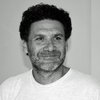Calling All Female Creative Directors

My initial plan for International Women's Day was to publish a simple recruitment ad on LinkedIn to share our ever-growing and specific need for more female creative directors in our community.
But, while I don't want to pretend like I'm particularly qualified to speak on the issues that women face in today's workforce, I did have some thoughts reflecting upon the immeasurable value that female voices have brought to our organization and the power that anonymity can play as we aim to lose the bias that too often can stop these voices being heard.
On this International Women's Day, I'd like to share an open letter to all female creative directors in the world.
Dear Female Creative Directors,
>There's no more essential component to marketing and creativity than the diversity of thinkers. At BeenThereDoneThat, our mission is to harness the world's best thinkers to solve the world's biggest problems. The only way we can do so effectively, and at scale, is to aggregate a community that our clients embrace and are drawn to, even when they remain anonymous.
That's the power of anonymity: It doesn't matter where the ideas come from; the emphasis is placed on the ideas themselves. The more unique perspectives and experiences we have to coalesce and draw from, the better we'll be able to deliver the highest quality of work to our clients.
I often like to reference the "blind" audition that orchestras implemented in the late twentieth century, aimed to minimize sex-biased hiring and the number of female musicians. The practice was an indisputable success, increasing the number of women in symphonies by more than 20 percent.
In the 1970s, Stephanie "Steve" Shirley launched Freelance Programmers as a vehicle to bring more women into the workforce and technology specifically. Two hundred and ninety-seven of her first 300 employees were women who exclusively worked from home, consulting clients and creating industry-leading standards to develop and test software. Their work was simply judged on the work itself, not who was producing it.
In some ways, we've replicated this concept in our own business model -- curating an anonymous community so our clients can effectively only hear the music of our ideas and not be impacted by the voices presenting them.
Not only does anonymity allow for a greater number of diverse minds, to express their ideas, but our thinkers are able to supercharge the model of bravery, going for bolder and more creative ideas that they might not otherwise suggest if their name was attached. The model filters out the bias, but it's also designed to challenge -- be that our team, the brief, or the client.
Of course, anonymizing women is not the ultimate solution we're searching for to ensure they're drawing in a larger spotlight. The goal is to completely remove the bias. But the exercise underscores the importance of why greater gender equality is needed to advance the work we're all doing on a daily basis.
The last year has been a strain on all of us, to say the least. But on the positive end, I will say that the pandemic has opened our eyes to what the future workplace can resemble.
The pandemic has required us to become more accommodating to the different lifestyles we all lead, regardless of gender or race. Our employees can more easily integrate work into their own lives based on the particular demands or constraints that have traditionally restricted contribution, be that based on their time, their location, their anonymity or anything else. The result? A deeper pool of first-class talent, a wider variety of thinking and strategy, and an elevated offering for clients.
The lesson here is that it's never been more important for leaders to recognize when they're unconsciously limiting contributions based on individual biases of how and when it's most convenient to be productive, for anybody.
The reality is that in today's world, the working day isn't always about work. I often have my most creative thoughts outside of the business of nine to five, and it's essential that we reorient our mindset to accommodate for what life is really like today. I trust that in doing so, we'll inherently become more inclusive and be exposed to the best ideas our community has to offer.
That means allowing all of us to work in a way that works for us, something traditional full-time jobs haven't allowed. It means offering flexibility to people who have various responsibilities throughout the day and letting them work in windows when you're not typically online.
Beyond anything else, today's leaders have to commit to diversity of thought, which will always be at the forefront of our offering. The creative stimulus we yearn for is ultimately brought by the full spectrum of human experiences, and we need to do a better job of playing our part and realizing the genuine equality of all thinkers.
To all female creative directors, we need your help. We welcome your feedback and contributions, and we'd love to connect with you about joining our community.
David

Click the social buttons above or below to share this content with your friends and colleagues.
The opinions and points of view expressed in this content are exclusively the views of the author and/or subject(s) and do not necessarily represent the views of MediaVillage.com/MyersBizNet, Inc. management or associated writers.


